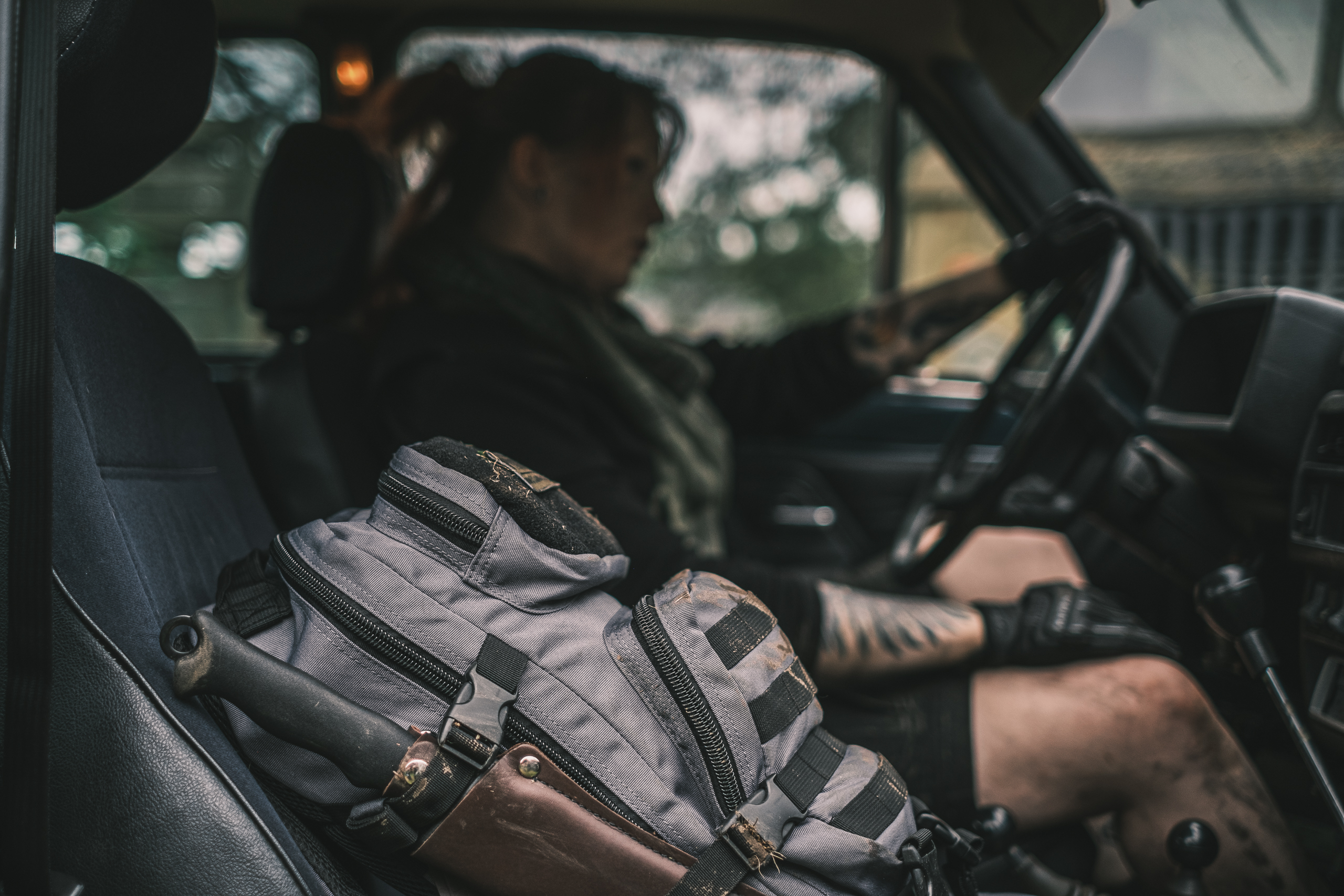
Bug Out Bag
Bug Out Bag
Wherever you may live, a situation can arise where you are forced to leave your home, at least temporarily. It might be a natural disaster, or a human one, perhaps even a special military operation. Anyway, you’ll have to make a run for it, and you can't rely on the help of others, because everyone else is also in the same situation.
When bugging out, speed is of the essence, and this comes down to good old preparedness. One way to prepare for extreme circumstances is to have a ready-packed survival gear set by your door – a bug out bag. After you slam the door behind you and hit the road, the general rule is that you will not return to your place to restock until the whole situation has blown over – or never, for that matter. You are supposed to survive with the stuff in your bag for at least three days. This gives you three days to make a new plan and find new supplies.
Survival in a nutshell: Stay hydrated, fed, warm, dry, and uninjured. Keep this up, and you’ll live.
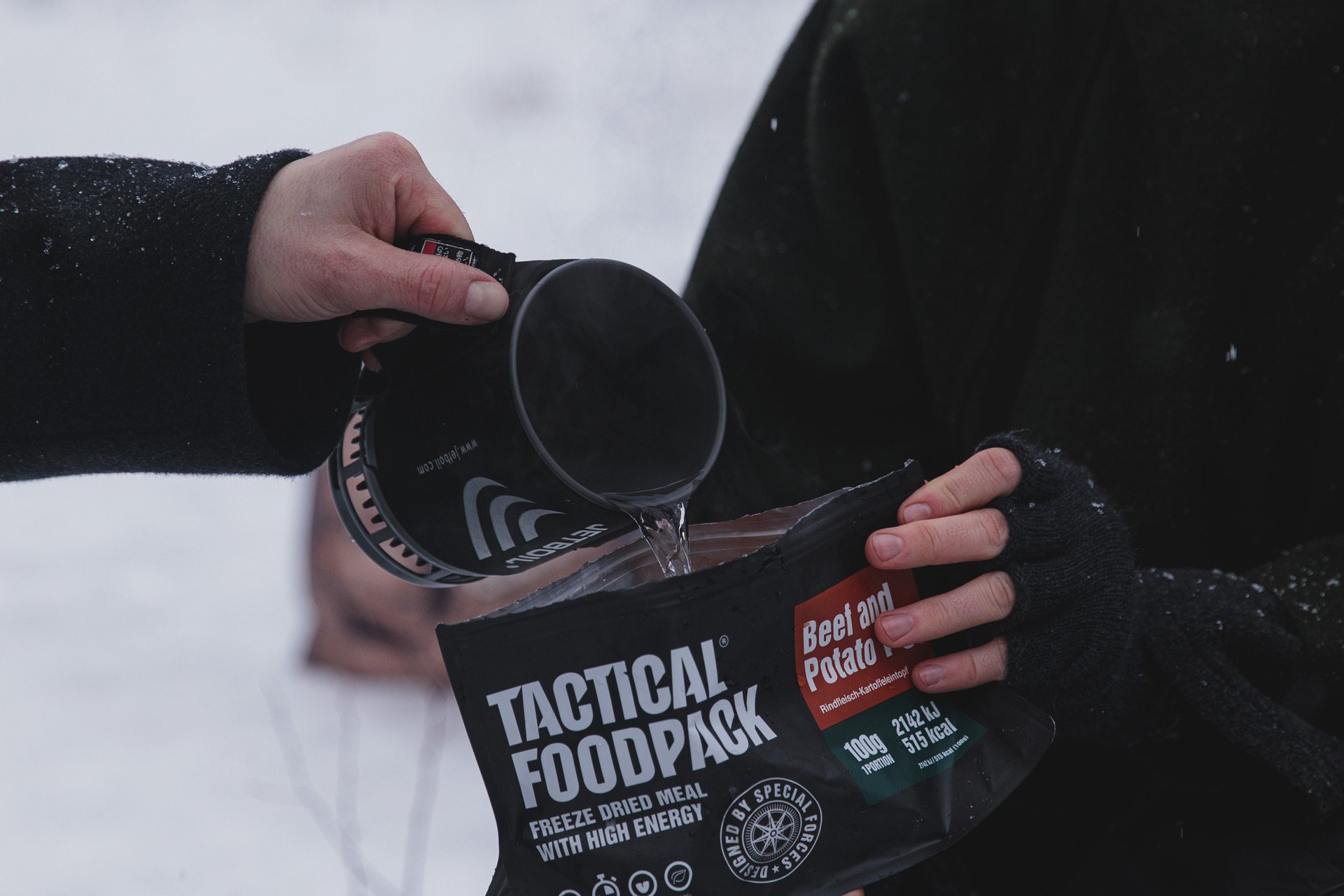
Packing the bag
You can't have your bag and eat it too
The idea of a bug out bag is that it is always packed and ready. You are not to take stuff out and then forget to put it back. Ready means ready, and food for the bug out bag stays in the bug out bag. A smart person also checks the bag periodically to see if everything is in place and in order. So, make a list of the survival gear you need, get them, and put them in your bag. Keep a copy of the list in the bag. Use the bug out bag list to check your bag. Simple?
There are many things, and they get heavy
A bug out bag is packed by the same principles as any backpack or rucksack for hiking or other outdoor activities: the heaviest stuff against your back, and so on. But: In a survival context, accessibility is as important as weight distribution. Don’t just stuff your things in there. Pack your gear so it’s easily accessible – even in the dark. There might be situations where light is not available or its use is not advisable. Low light operation is made easier by packing your gear in distinct compartments. Use trinket pouches or dry sacks. Using dry sacks or otherwise protecting your gear from water and moisture is a good idea anyway.
Carrying the bag
The foundation of any solid bug out bag is a durable and practically sized backpack. Get yourself one first. And yes, a backpack or a rucksack. You won’t carry 30 lbs of gear in your hands or on your shoulder for long. If your bug out takes you outdoors, and the worse the conditions are, the more gear you’ll have to haul. Pick your backpack accordingly.
Generally, one person will carry the survival gear for one person. If you have to carry gear for someone extra (e.g., children), plan your loadout with multipurposed use of gear in mind. For example, you only need one field cooker, for example. Also, a tent is usually way too heavy and bulky to be carried around by one person. However, if you are moving as a group, you can distribute weight between people, and carry team items. In this case, a tent might be a solid idea. Use your head – and also keep in mind the possibility that your group might get split up.
Another example: Sometimes, you might want to go as light as possible; instead of a tarp and a set of rain clothes, you only carry a rain poncho, which you can also use for a temporary lean-to and such.
Keeping it real
Before you arrive at the moment when things have actually gotten real, do a practice run. Put on your backpack, and head out. Walk a few miles with your gear. Is it too heavy? Are the backpack adjustments correct? Can you find your stuff in the dark? Camp somewhere for the night. Put up your camp, and take it down in the dark. This will tell you if your setup works.
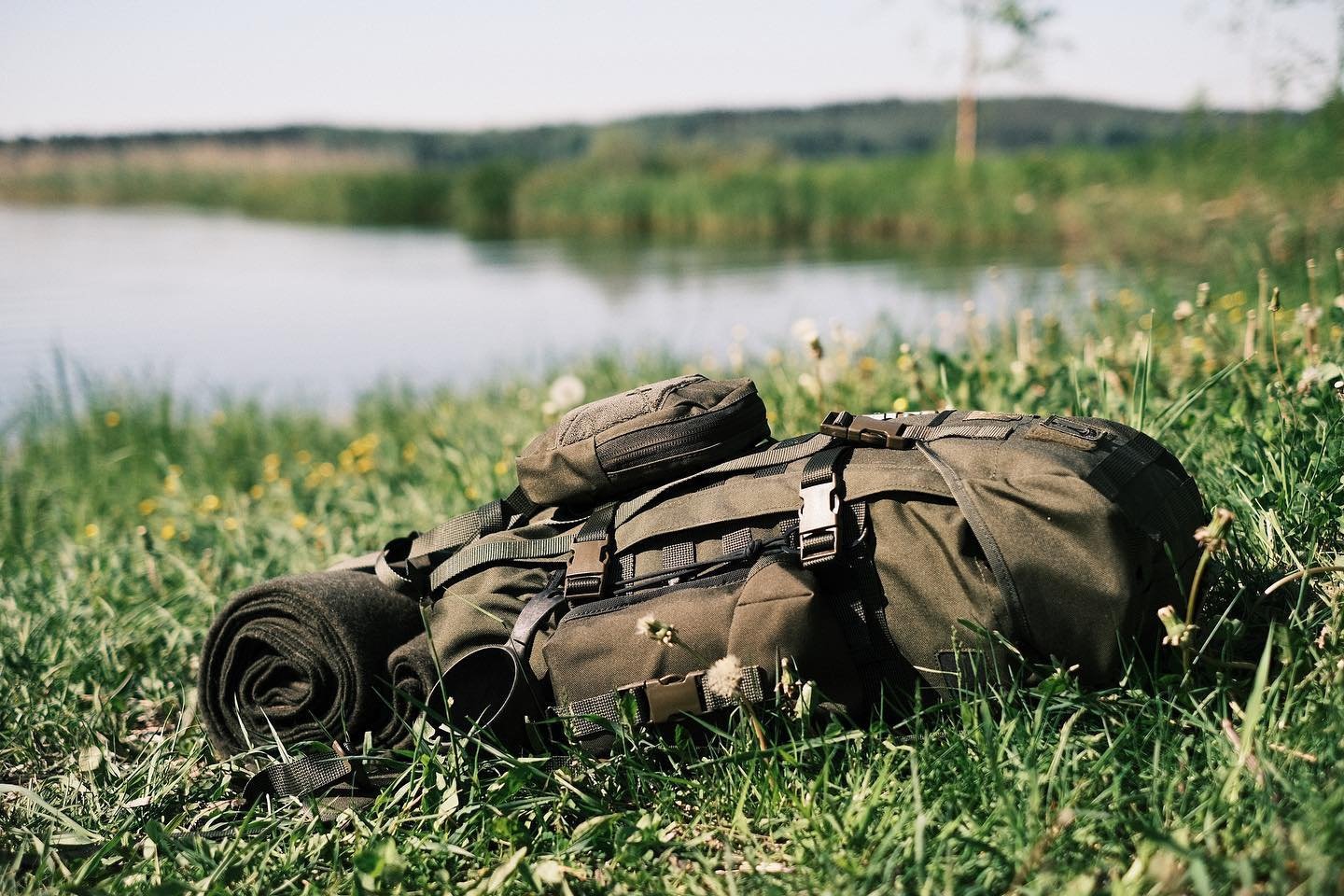
BUG OUT BAG times three
When the going gets tough, and you have to haul ass, you have two choices – you either get away, or go deeper inside. What you put in your bag depends on your plan. Whatever the plan is, some staple items go in every survival kit, like a knife of some sort. On critical items, follow the “two is one, one is none” principle. For example, you should have at least two different ways to light a fire, matches and a fire steel/ferrous rod.
We have prepared basic bug out bag loadouts for these three scenarios. As they are very basic, you can and should modify and scale them to meet your needs, and whatever the likeliest situation for you would be. But remember: This is about survival. Carry only essential items. You will not be able to move through terrain dragging a bunch of fake Vuittons behind you.
Woodland Bag
Wet bilberry shrubs rustle against your boots. You still have miles to go, but it’s getting dark, and you have to camp for the night. The autumn night is pitch black, and a nightly rain is on the way. Somewhere far ahead, you hear a dog barking.
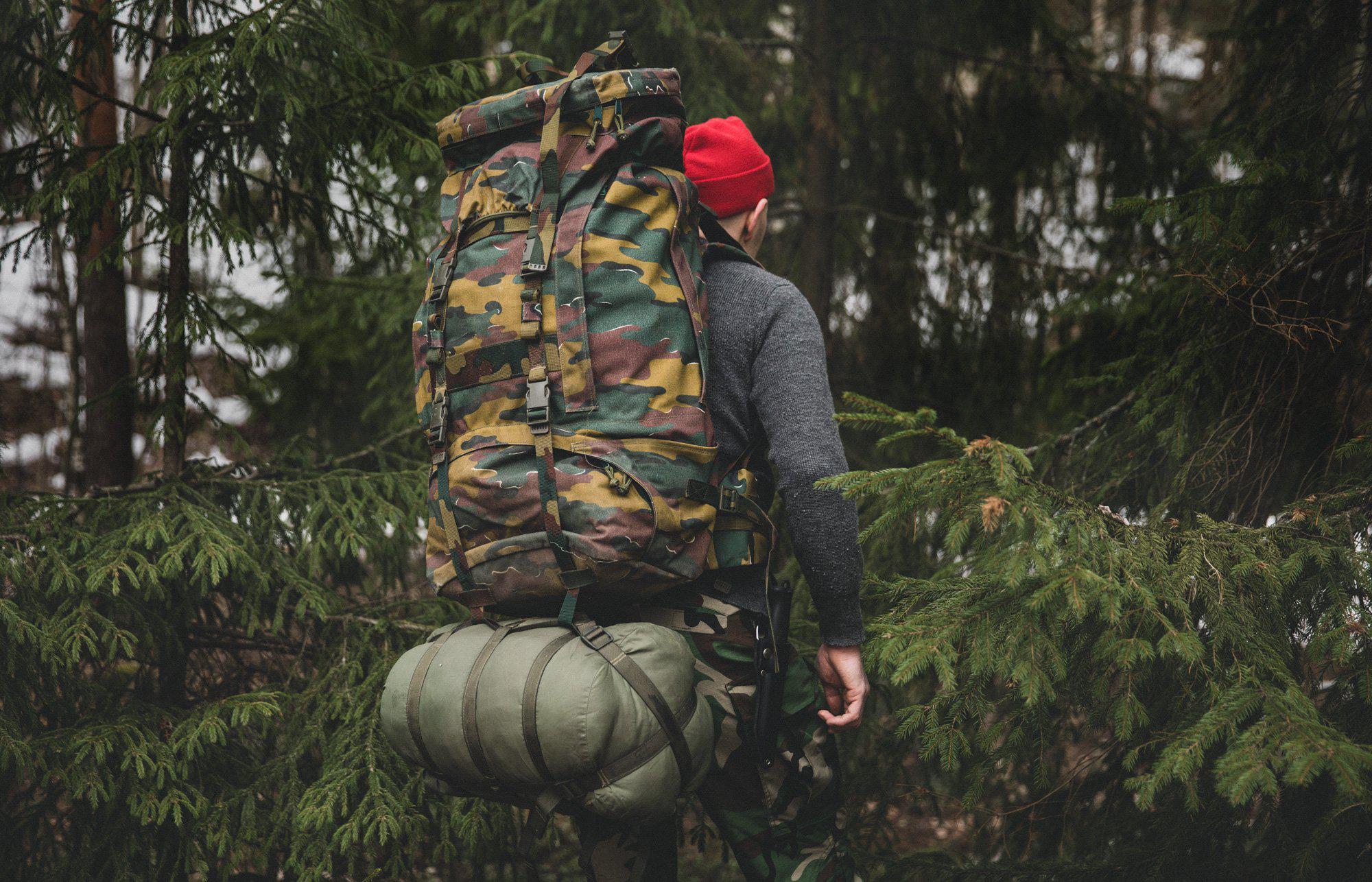
You have chosen to get away. “Away” might mean the forest, a summer cabin, or if you’ve prepared properly, a real bug out location (BOL). You might have provisions put away in advance, or not. At a minimum, you have to provide for yourself (and possibly others) for the duration of transit. You might not have a vehicle at your disposal.
- Backpack
- Clothes
- Proper outer layer
- Merino wool base layer
- Merino wool socks
- Rain suit
- Waterproof shoes
- Headwear and gloves
- Camping gear
- Sleeping pad
- Sleeping bag
- Tarp or tent
- Cord
- Tools
- Knife and a sharpener
- Fire starting tools (at least two ways)
- Axe or a folding saw
- Headlamp and batteries
- Pencil and a writing pad
- Compass
- Binoculars
- Food and water
- Canteen (easy to fill)
- Hydration bladder (easy to carry)
- Water for three days (3 liters)
- Water purification
- Food for three days
- Cooker and supplies
- Spork
- Other essentials
- First aid kit
- Personal medication
- Hygiene products
- Powerbank for phone
- AM/FM Battery radio and batteries
Urban Bag
Is someone following? For a brief moment, you are sure you spotted someone slipping behind the corner of the abandoned subway station. You decide to up your pace, although moving faster might expose you to unwanted attention. You stride through a dilapidated playground between some unlit apartment buildings. Suddenly, you notice a flashlight beam moving behind a window in the building to your right.
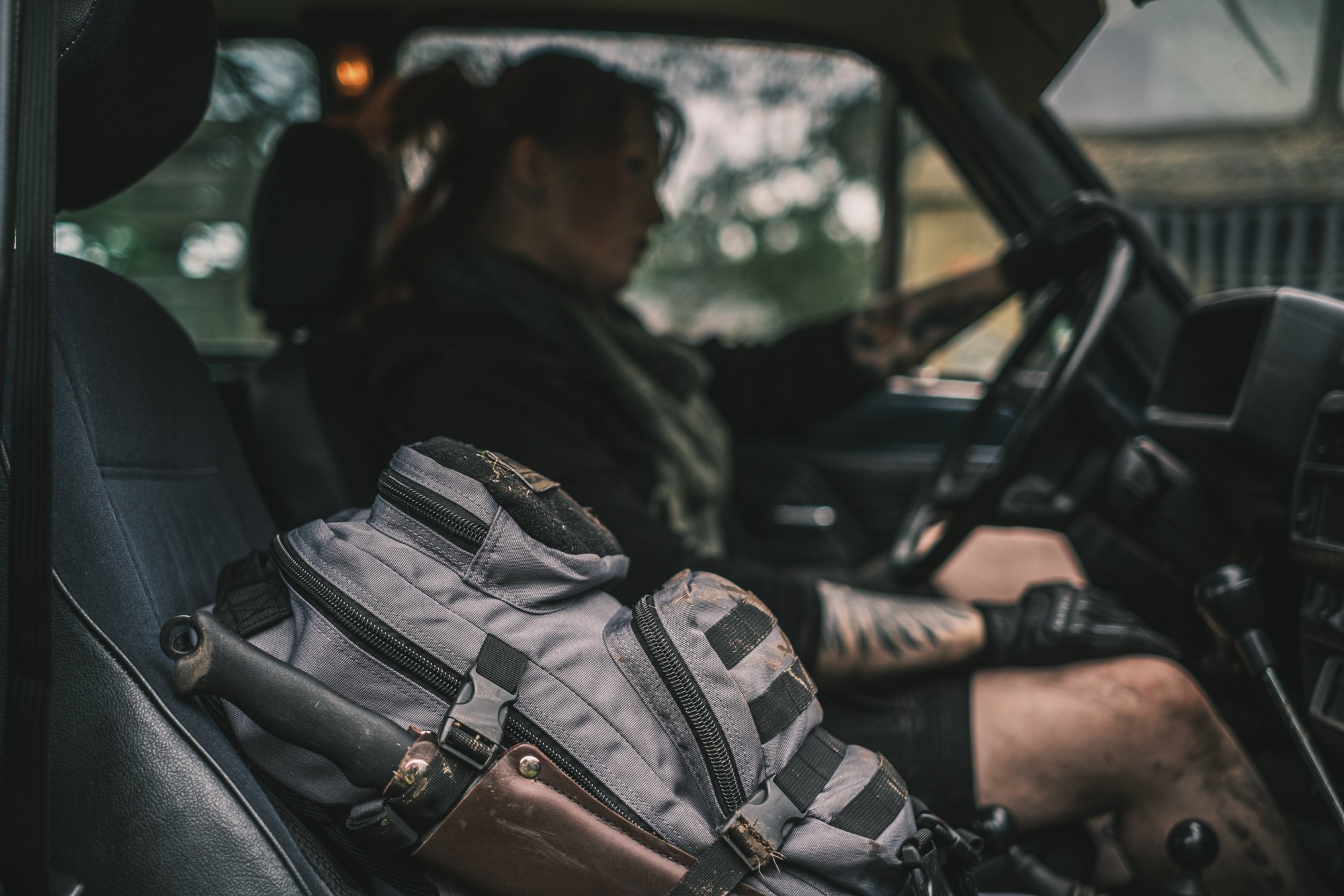
If you live in a densely populated area and you don’t have an exit strategy or it becomes unfeasible for some reason, you might have to go “deeper inside,” which means setting up camp in some abandoned apartment or warehouse, or somewhere else, for the long term or short – you might be forced to move around. When the sun sets, not everyone is your friend.
The contents of this urban bug out bag are similar to the woodland one, but a tad bit lighter. If you might leave the city after all and head for the woods, you know what to do (build a woodland bag instead).
- Backpack
- Clothes
- Merino wool base layer
- Merino wool socks
- Rain poncho
- Waterproof shoes
- Headwear and gloves
- Camping gear
- Sleeping pad
- Sleeping bag
- Use the poncho
- Cord, duct tape, and wire
- Tools
- Knife or multitool and a sharpener
- Fire starting tools (at least two ways)
- Headlamp and batteries
- Pencil and a writing pad
- Binoculars
- Food and water
- Canteen (easy to fill)
- Hydration bladder (easy to carry)
- Water for three days (3 liters)
- Water purification
- Food for three days
- Cooker and supplies
- Spork
- Other essentials
- First aid kit
- Personal medication
- Hygiene products
- Charger and a powerbank for phone
- AM/FM battery radio and batteries
Shelter Bag
“What’s going on in there?” a trembling male voice asks from behind the latrine curtain. You resume counting the rest of your money, and then put it back in your money belt under your shirt. You take your backpack, open the curtain, and step out. Bumping into you, a man rushes to the bucket and drops his pants. The horrid contents of his bowels explode immediately to the bottom of the bucket, where they meet a similarly horrifying toilet paper sludge. You try not to breathe in the pungent aromas, and you return to your sleeping area. You spread your sleeping pad on the cold concrete floor once again. One more night in this shelter, then you can be on your way to find the others.
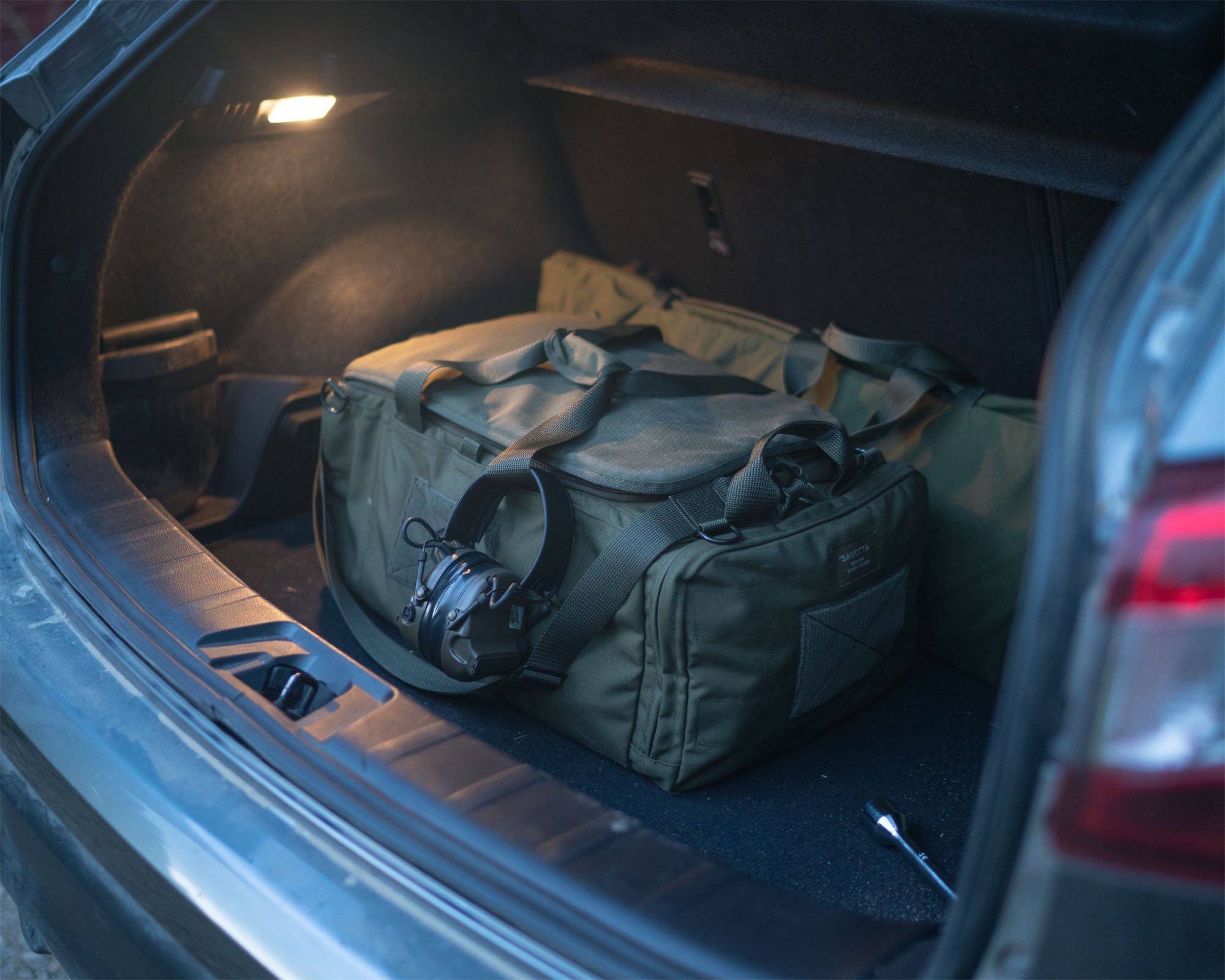
If there is a public shelter available, first you have to get there and then have your own supplies for the duration of your visit – shelters are generally not outfitted with rations or even water. There are no showers. You have a place to lay down, a shared bucket to relieve yourself, and a chance to survive.
The contents of this bag are meant for indoor use. If you might leave the shelter for another hideout or even the city and head for the woods, you know what to do (build a bug out bag accordingly). Note that it might be prohibited to take any heating appliances (e.g., stoves and cookers) to the shelter.
- Backpack
- Clothes
- Merino wool base layer
- Merino wool socks
- Extra underwear
- Rain poncho
- Headwear and gloves
- Camping gear
- Sleeping pad
- Sleeping bag
- Tools
- Knife or multitool and a sharpener
- Fire starting tools (at least two ways)
- Headlamp and batteries
- Pencil and a writing pad
- Food and water
- Canteen (easy to fill)
- Hydration bladder (easy to carry)
- Water for three days (3 liters)
- Water purification
- Food for three days
- Spork
- Other essentials
- First aid kit
- Personal medication
- Diarrhea medication
- Hygiene products
- Plenty of hand sanitizer
- Plenty of wet wipes
- Rubber gloves
- Face masks
- Roll of trash bags
- Charger and a powerbank for phone
- AM/FM battery radio and batteries
Light at the end of the tunnel
Repetition is the mother of learning: Stay hydrated, fed, warm, dry, and uninjured. Keep this up, and you’ll live.
The subject matter is vast; this article is a stump. What next? Along with having the right gear, you should stay informed of current events for preparedness’ sake. Also, read books and articles (like here and here) on survival. Practice your skills. Sign up for courses on relevant subjects. Stay fit. If you’re not fit, get fit. After you have done all of this, live your everyday life, and don’t worry about it – if shit hits the fan, you’ll know what to do.